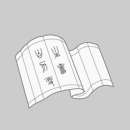
中国古代科技史(英文版)
全新正版
¥ 56.76 5.3折 ¥ 108 全新
仅1件
江西抚州
认证卖家担保交易快速发货售后保障
作者中国科学院自然科学史研究所、外文出版社英文部 编
出版社外文出版社
出版时间2009-08
版次1
印数1千册
装帧精装
货号26
上书时间2024-07-29
- 最新上架
商品详情
- 品相描述:全新
图书标准信息
- 作者 中国科学院自然科学史研究所、外文出版社英文部 编
- 出版社 外文出版社
- 出版时间 2009-08
- 版次 1
- ISBN 9787119057545
- 定价 108.00元
- 装帧 精装
- 开本 16开
- 纸张 胶版纸
- 页数 632页
- 字数 100千字
- 正文语种 英语
- 【内容简介】
- Cataloguedaccordingtodifferentscientificfields,thebookdrawswisdomfromauthoritativeexpertsintheinstituteoftheHistoryofNaturalSciences(IHNS)fromtheChineseAcademyofSciences(CAS),andcomprehensivelyintroducesancientChinasscientificandtechnologicalachieve-mentsinsuchfieldsasastronomy,mathematics,physics,chemistry,geology,biology,agriculture,medicine,printing,spinningandweaving,metal-lurgyandfoundry,machinery,architecture,ship-buildingandnavigation,andmilitarytechnology,etc.ThisbookisOfhighacademicqualityyetwrit-teninthesimplestlanguagepossible,andthusisaveryreadablepopularsciencecollection.
- 【作者简介】
-
学院自然科学史研究所,foundedin1957theinstituteofthehistoryofnaturalsciences(ihns)ofthechineseacademyofsciences(cas)isthesoleprehensiveandmultidisciplinaryorganizationdevotedtoresearchonthehistoryofscienceandtechnologyanditslawofdevelopmenttherelationshipbetweenscienceandotherfieldssuchassociologyeconomicsthoughtandcultureandtherelativedevelopmentstrategiesofscienceandtechnology.sinceitsfounihnsresearchershavepublishedmorethan400researchworksandmorethan3800papers.amongthemsomerecentoutstanachievementsinclude:generalcollectionofworksinancientchinesescienceandtechnology(10volumesprising50books)prehensivehistoryofchineseculture.scienceandtechnology(10volumes)contemporaryandmodernhistoryofchinesescienceandcontemporaryandmodernhistoryofchinesetechnology;aswellasastronomicaldynasticresearchrepresentedbydynasticprojectoftheashangandzhouresearchonworldfamouslaboratoriesandresearchontheoriginandspreadoftheartofprinting.
精彩内容:
between the 5th and 3rd century b.c. when the quarter-remainder calendar was in use, the winter solstice point was set at the entrance to the lunar mansion qianniu or the region approaching giedi(β capricorni). the zhuanxu calendar of 221 b.c. did the same, and this may be accepted as chinas earliest such datum obtained through actual observations.
as it was isible to ascertain the suns relative ition by direct observation, the ancient astronomers resorted to indirect means. they identified the day of the winter solstice, ascertained its midnight by using the cleydra and found out the distance of the star at the zenith to the nearest lunar-mansion determinative star. they could thus tell the location of the sun, which stood directly opite that star. the data obtained were inevitably inaccurate because the cleydra was hardly a satisfactory chronometer.
the chinese astronomers were ignorant of the precession until the 3rd century. before that they thought the sun made an exact round trip along its orbit in the celestial sphere between winter solstices. that was why they fixed the tropical year at 365.25 days and divided the natural celestial sphere into as many degrees. as far as they knew the winter solstice point was fixed, and the notion that the point was in the region approaching giedi remained. makers of the taichu calendar of 104 b.c. virtually based themselves on the same data. in a.d. 7 liu yin noted, if vaguely, the wavering of the winter solstice point. - 【目录】
-
PREFACE
RECORDSOFASTRONOMICALEVENTS
ASTROMETRYANDASTROMETRICINSTRUMENTS
CHINESECALENDARS
MATHEMATICALCLASSICS
THEDECIMALPLACE-VALUENUMERATIONANDTHERODANDBEADARITHMETICS
THEOUT-INCOMPLEMENTARYPRINCIPLE
METHODFORDETERMININGSEGMENTAREASANDEVALUA-TIONOF
THECHINESEREMAINDERTHEOREM
THENUMERICALSOLUTIONOFHIGHEREQUATIDNSANDTHETIANYUANMETHOD
MECHANICS
ACOUSTICS
MAGNETISMANDTHECOMPASS
OPTICS
THEINVENTIONANDDEVELOPMENTOFPAPERMAKING
GUNPOWDERANDFIREARMS
PORCELAIN
LACQUERANDLACQUERTECHNIQUE
ALCHEMYINANCIENTCHINA
PHENOLOGICALCALENDARSANDKNOWLEDGEOFPHE-NOLOGY
WATERCONSERVANCYPROJECTSANDKNOWLEDGEOFHYDROLOGY
MAPS2,000YEARSAGOANDANCIENTCARTOGRAPHICALRULES
ROCKS,MINERALOGYANDMINING
EARTHQUAKEFORECASTING,PRECAUTIONSAGAINSTEARTHQUAKESANDANTI-SEISMICMEASURES
RESEARCHESINHEREDITYANDBREEDING
SOMEOUTSTANDINGWORKSONAGRICULTURE
SERICULTURE
HORTICULTURE
TEA
TWOCELEBRATEDMEDICALWORKS
ACUPUNCTUREANDMOXIBUSTION
ACHIEVEMENTSINANCIENTCHINESEPHARMACOLOGY
DIAGNOSISBYPULSEFEELINGINCHINESETRADITIONALMEDICINE
……
点击展开
点击收起
— 没有更多了 —












以下为对购买帮助不大的评价